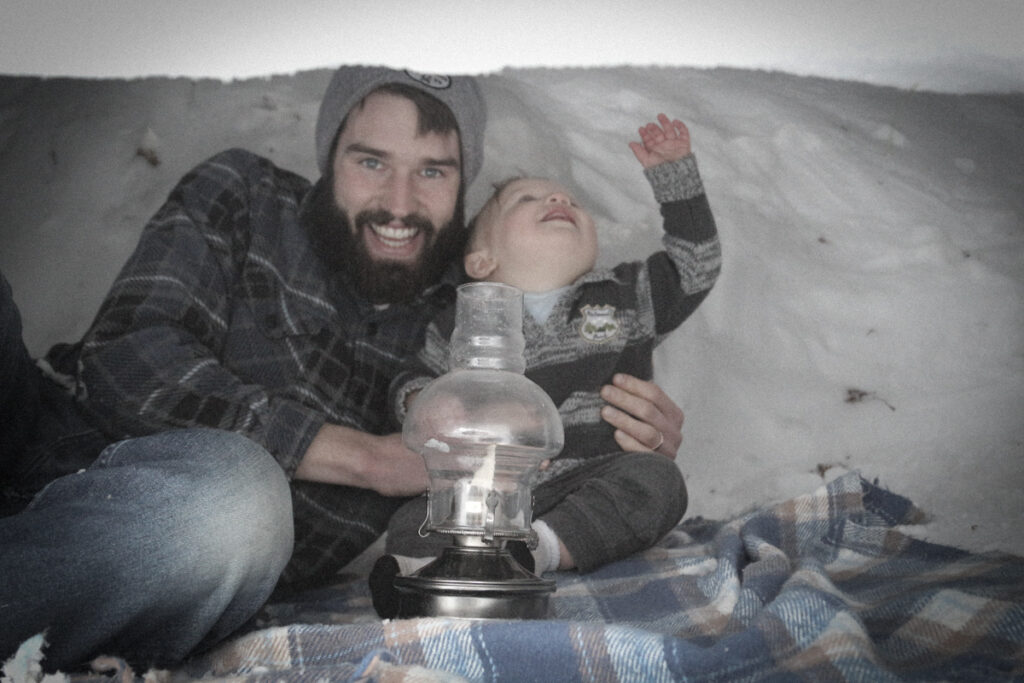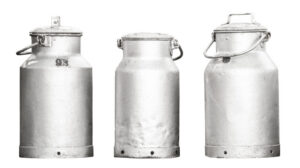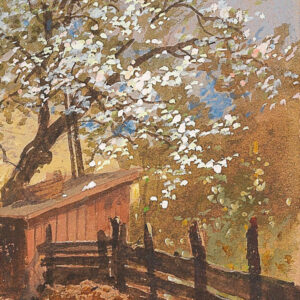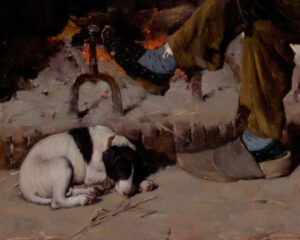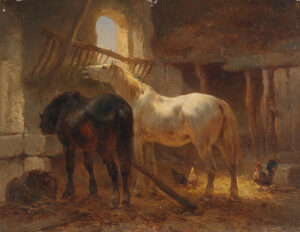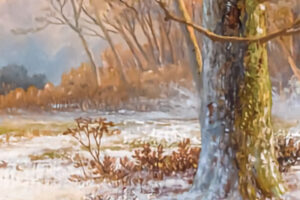How to Properly Sleep in the Snow
The Quaint Art of Quinzhee Building

Mr. Nathan Runde
I walked outside of the lodge and was greeted by a peculiar sight. I was on a retreat in the wintertime, and there in the field across from the lodge, a group of four of my fellow retreatants were shoveling snow from the field into a large heap. Curious, I approached one of them.
“Michael, what are you guys doing?” I inquired.
He looked at me with a proud grin and stopped shoveling for a moment, “Building a quinzhee!” He replied.
Since my question really hadn’t been answered (having no idea what a “quinzhee” was) I inquired further. “Um… what’s that?
This time Michael stayed focused on his shoveling as he talked, “It’s basically an igloo but easier to make. We’re going to try to sleep in it tonight.”
My heart fluttered with snowy delight as I pondered the adventurous notion of sleeping outside in the wintertime in Northern Wisconsin. “May I help?”
I was quickly handed a shovel and began my first construction of a quinzhee. The word, pronounced “kwinzee,” was the name given by the Athabaskan Natives in Alaska and Northern Canada to their particular kind of snow shelter. As Michael had explained, a quinzhee is basically an igloo though much simpler to make; one merely makes a pile of snow and hollows it out.
As we worked on our quinzhee, my inner child was stirred. I thought of snow forts, snowmen, and snowball fights. I reminisced about days on the playground when my friends and I would dig tunnels through snow hills heaped up by plow trucks (to the consternation of the teachers). Like that child I once was, I labored with love on the quinzhee.
After a few hours of work, minus one cocoa break, we had a five-man snow hut, encircled by a pony-wall to block the wind. I beamed proudly at the picturesque scene: quinzhee in the foreground, woods in the back, thick snow blanketing the ground and bedazzling the evergreens. When I crawled inside the quinzhee, I felt secure and peaceful. The wind was completely muffled and the strong walls seemed protective. That night five of us squeezed in and slept cozily despite the fifteen degree temperatures and bitter wind chill. To my surprise, building a quinzhee was neither boring nor overly strenuous, and I slept quite well within its walls. The experience was delightful.
So that you too can share this pleasant adventure, following are the essentials of constructing your own quaint quinzhee. And the skill may come in handy if you are ever stranded in a snowy wilderness. In case that ever happens I figure it’s best to start practicing now, with friends and a steady supply of hot chocolate (or something stronger).
What You Need
A quinzhee can be built anywhere that there is enough snow. Even a couple inches of snow cover is sufficient, but the more there is on the ground, the less you will have to move from far away to put on your pile. You could make one in your backyard, in a state park, or even, as I once witnessed, outside of a college dormitory (a faint smell of tobacco seemed to waft from that quinzhee on our otherwise smoke-free campus.) The temperature should be below freezing during construction, though a quinzhee can last even in temperatures slightly above freezing. The only materials necessary are shovels and an armful of two to three foot long sticks. A sled with a string attached can be handy too. (In emergency situations, absent a shovel, get busy with your hands or flat rocks or whatever you can find. Hopefully you will not find yourself in emergency situations without gloves.)
What You Do
The first step in building these cozy snow huts is to mound the snow. To determine what size of mound you will need, have all the people who will sleep in it lay on the ground in the formation in which they will sleep. Walk in a circle around them about two feet away from their bodies, dragging your feet to cut a circle in the snow. The circle you made with your tracks will be the circumference of the quinzhee. Pile up snow within that circle until it is about eight feet tall, heaped like a turtle shell.
After you have an adequate pile of snow, you’ll want to take a little beverage break and maybe go play some boot hockey. The piled snow needs to sit for a while before you can hollow it out. This process, called sintering, allows the snow crystals and moisture to bond and create sturdy walls for your hut. It takes about two hours. Sintering is the reason you can sometimes walk on top of a deep layer of snow without falling through.
Once you’re tired of boot hockey, you can begin gathering two to three-foot-long sticks, because after the snow pile is ready you will begin poking these sticks into it. The sticks should be poked in more than a foot deep across the whole mound with about a three-foot distance between sticks. Once all the sticks are inserted, you will have a large white porcupine-like mound with sticks poking out all over.
These sticks will act as a gauge of the wall once you begin hollowing out the mound. If you hit the bottom of a stick, you know you’ve removed enough snow from that part of the wall. This will ensure that the walls stay a foot or two thick. Walls thicker than two feet could be a safety hazard in the event that your quinzhee would collapse. Walls thinner than one foot are not as strong nor as insulated.
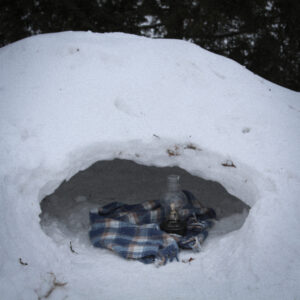

Be sure to allow a nice bed of snow to remain on the floor of the quinzhee, elevated a few inches higher than the entrance. This will allow cold air to flow down and out of the quinzhee, and it will be a comfier bed than the frozen earth below. This can be the difference between a snug night’s sleep and a shivering sleepless night; so be sure to elevate that floor!
Faster than you can say “Jack Frost”, you’ll have a cozy, homey snow cave. Poke a six-inch-diameter hole in the center of the roof as an air vent. This will ensure proper ventilation and keep it smelling fresh inside. You could also add an exterior snow wall for wind protection about two feet in front of your door. The wall can stretch as far as you like around the quinzhee.
If you plan to spend daytime hours in your quinzhee, you may want to install windows. Use an old cake pan or an ice cream pale to freeze large chunks of ice. Once you have your ice chunks, just punch a hole in the wall and shimmy the ice chunk into the hole. Brush the excess snow off of the ice, and a nice bit of extra lighting will shine through during the day. Don’t get too crazy though, as too many windows can compromise the strength of the walls.
Your quinzhee is now built. Revel in the novelty of it for a while. You’ve worked hard. If you start to feel a yawn coming on, it’s time to begin prepping for sleep. To sleep in your quinzhee, lay a tarp down over the snow on the ground. Over the tarp, layer fleece, wool, or polyester blankets. The more you can layer and the higher you can get up off the ground the better. You don’t want any moisture from the snow to get to you. Once you’ve layered some blankets over the tarp you can lay your sleeping bag down. Your sleeping bag should be rated for thirty-two degrees or colder. The inside of a properly-made quinzhee should remain around thirty-two degrees, even if it gets a good deal colder than that outside.
When sleeping outside, it is important to layer up with fleece, wool, or polyester. Cotton holds water too well and the moisture will make you cold. Another useful trick is to take an insulated metal water bottle and pour boiled water into it. You can put this water bottle by your stocking feet, and it will keep them warm through the night. Also, a single burning candle goes a long way in keeping a quinzhee warm, not to mention that reading Jack London by candlelight in a quinzhee is quite epic. Prudent judgement of course is necessary, but even in very cold temperatures a well-built quinzhee can keep is occupants (reasonably) cozy all through the night.
Building a quinzhee is a pleasant adventure — one I hope you will enjoy. Amidst the bitter cold and frightful winds, you’ll be peacefully asleep, dreaming of ice castles and talking snowmen. Though Old Man Winter may be ravaging the outdoors, you, like a little child, can relax, safe from his crotchetiness — happy, snug, and warm(ish).
